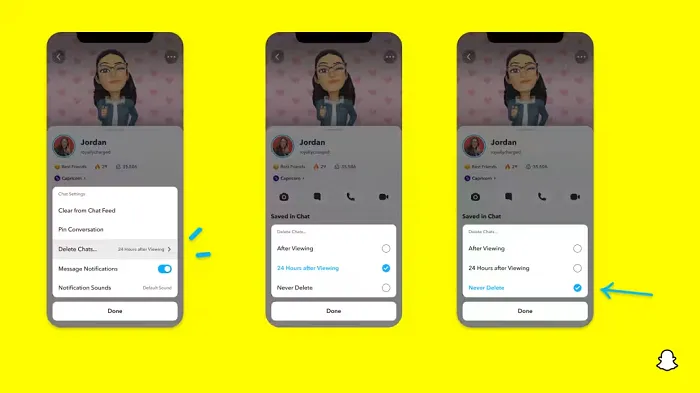SOCIAL
Facebook Limits Content Sharing in Ethiopia to Limit the Spread of Misinformation and Hate Speech

Among the various issues and concerns highlighted by the recent ‘Facebook Files’ internal data leak was the suggestion that content sharing on Facebook is actually one of the most harmful actions, as the ease of amplifying questionable content by simply tapping ‘Share’ significantly increases the amount of people doing exactly that.
Indeed, one of the most recent reports shared by Facebook whistleblower Frances Haugen indicated that Facebook’s own research has shown that the ‘Share’ option is harmful, particularly in relation to shares of shares.
As reported by Alex Kantrowitz in his newsletter Big Technology:
“The report noted that people are four times more likely to see misinformation when they encounter a post via a share of a share – kind of like a retweet of a retweet – compared to a typical photo or link on Facebook. Add a few more shares to the chain, and people are five to ten times more likely to see misinformation. It gets worse in certain countries. In India, people who encounter “deep reshares,” as the researchers call them, are twenty times more likely to see misinformation.”
In other words, the content that tends to see repeated shares is far more likely to include misinformation – which makes sense given the more salacious and divisive nature of such claims.
The question then, however, is what’s Facebook, or Meta, going to do about it, with Haugen claiming that the company has ignored these findings.
Though that isn’t entirely correct. Today, in an update on the measures that were implemented on Facebook specifically in order to stop the spread of misinformation and hate speech in Ethiopia ahead of the nation’s recent elections, Meta included this note:
“To address possible viral content, we’re continuing to reduce content that has been shared by a chain of two or more people. We’re also continuing to reduce the distribution of content that our proactive detection technology identifies as likely to violate our policies against hate speech as well as from accounts that have recently and repeatedly posted violating content.”
So Meta is actually looking to implement certain restrictions on post sharing, in line with its previous findings.
Which is good, and given the research, it makes sense. But then again, if Meta is acknowledging that shares of shares are a potential problem, which can contribute to the amplification of harmful posts, why not implement this as a blanket rule – or even further, why not remove the ‘Share’ option entirely to eliminate this type of rapid amplification?
To be clear, if Facebook were to remove the ‘Share’ button, users would still be able to share content.
- Users would still be able to post article links in their own updates, but they would be more likely to include their own personal thoughts on each, given they’d have to create a new post
- Users would still be able to react to and ‘Like’ posts, which then increases exposure to their connections, and broader networks, through engagement activity
- Users would still be able to comment on posts, which also increases exposure based on the algorithm seeking to show the most engaging content to more users
Theoretically, people would also still be able to share posts via message as well, as per this iteration of the Facebook post UI that Facebook tested in 2018, which replaced the ‘Share’ button with a ‘Message’ one instead.

So there would still be options for engaging with content via Facebook, but the research suggests that having a quick ‘Share’ option can significantly contribute to the rapid spread of questionable claims.
Maybe, by removing it, and ideally forcing users to take more time and thought in their process, that would lessen blind sharing, and slow the spread of such posts.
That’s the same theory that Twitter used when it removed straight retweeting as an option for US users in October last year, in the lead-up to the Presidential Election.

As you can see here, instead of allowing users to blindly, and rapidly, retweet any claim, Twitter instead defaulted users to use its ‘Quote tweet’ option, in order, ideally, to get people to think a little more deeply about what they were sharing, as opposed to just re-amplifying content and quotes.
That did have some impact. After reinstating regular retweets in December, Twitter noted that the use of Quote Tweets did increase as a result, “but 45% of them included single-word affirmations and 70% had less than 25 characters”.
In other words, users were a little more hesitant in their sharing activity, but it didn’t inspire a lot more context in the process.
But then again, maybe that’s all that’s required – maybe, all you need is for people to take a minute, to think about the message for a second, and that may well be enough to stop them spreading viral misinformation and false claims.
That’s worked with Twitter’s pop-up alerts on articles that users attempt to retweet without actually opening the article link and reading the post first, with users opening articles 40% more often as a result of that increased friction.

Facebook has now adapted the same, again indicating that there is value in this approach – and again, with its own research showing that shares can be a negative element, why not simply remove the option to prompt more consideration in the process?
Of course, there would likely be impacts on publishers, who might see their referral traffic drop, while it would also impact Facebook engagement overall, by reducing the options for post interaction.
Is that why Meta wouldn’t do it? I mean, it has the data, and it’s already implementing its findings in certain situations to avoid potential harm. Meta knows that a change in its sharing process could have a positive impact.
Why not implement restrictions across the board?
It would be a big step, for sure, and there are various considerations within this. But the research and other indicators all show that Meta knows that this would be effective.
So why not do it, and reduce potential harm through blind re-distribution?
SOCIAL
12 Proven Methods to Make Money Blogging in 2024

 This is a contributed article.
This is a contributed article.
The world of blogging continues to thrive in 2024, offering a compelling avenue for creative minds to share their knowledge, build an audience, and even turn their passion into profit. Whether you’re a seasoned blogger or just starting, there are numerous effective strategies to monetize your blog and achieve financial success. Here, we delve into 12 proven methods to make money blogging in 2024:
1. Embrace Niche Expertise:
Standing out in the vast blogosphere requires focus. Carving a niche allows you to cater to a specific audience with targeted content. This not only builds a loyal following but also positions you as an authority in your chosen field. Whether it’s gardening techniques, travel hacking tips, or the intricacies of cryptocurrency, delve deep into a subject you’re passionate and knowledgeable about. Targeted audiences are more receptive to monetization efforts, making them ideal for success.
2. Content is King (and Queen):
High-quality content remains the cornerstone of any successful blog. In 2024, readers crave informative, engaging, and well-written content that solves their problems, answers their questions, or entertains them. Invest time in crafting valuable blog posts, articles, or videos that resonate with your target audience.
- Focus on evergreen content: Create content that remains relevant for a long time, attracting consistent traffic and boosting your earning potential.
- Incorporate multimedia: Spice up your content with captivating images, infographics, or even videos to enhance reader engagement and improve SEO.
- Maintain consistency: Develop a regular publishing schedule to build anticipation and keep your audience coming back for more.
3. The Power of SEO:
Search Engine Optimization (SEO) ensures your blog ranks high in search engine results for relevant keywords. This increases organic traffic, the lifeblood of any monetization strategy.
- Keyword research: Use keyword research tools to identify terms your target audience searches for. Strategically incorporate these keywords into your content naturally.
- Technical SEO: Optimize your blog’s loading speed, mobile responsiveness, and overall technical aspects to improve search engine ranking.
- Backlink building: Encourage other websites to link back to your content, boosting your blog’s authority in the eyes of search engines.
4. Monetization Magic: Affiliate Marketing
Affiliate marketing allows you to earn commissions by promoting other companies’ products or services. When a reader clicks on your affiliate link and makes a purchase, you get a commission.
- Choose relevant affiliates: Promote products or services that align with your niche and resonate with your audience.
- Transparency is key: Disclose your affiliate relationships clearly to your readers and build trust.
- Integrate strategically: Don’t just bombard readers with links. Weave affiliate promotions naturally into your content, highlighting the value proposition.
5. Display Advertising: A Classic Approach
Display advertising involves placing banner ads, text ads, or other visual elements on your blog. When a reader clicks on an ad, you earn revenue.
- Choose reputable ad networks: Partner with established ad networks that offer competitive rates and relevant ads for your audience.
- Strategic ad placement: Place ads thoughtfully, avoiding an overwhelming experience for readers.
- Track your performance: Monitor ad clicks and conversions to measure the effectiveness of your ad placements and optimize for better results.
6. Offer Premium Content:
Providing exclusive, in-depth content behind a paywall can generate additional income. This could be premium blog posts, ebooks, online courses, or webinars.
- Deliver exceptional value: Ensure your premium content offers significant value that justifies the price tag.
- Multiple pricing options: Consider offering tiered subscription plans to cater to different audience needs and budgets.
- Promote effectively: Highlight the benefits of your premium content and encourage readers to subscribe.
7. Coaching and Consulting:
Leverage your expertise by offering coaching or consulting services related to your niche. Readers who find your content valuable may be interested in personalized guidance.
- Position yourself as an expert: Showcase your qualifications, experience, and client testimonials to build trust and establish your credibility.
- Offer free consultations: Provide a limited free consultation to potential clients, allowing them to experience your expertise firsthand.
- Develop clear packages: Outline different coaching or consulting packages with varying time commitments and pricing structures.
8. The Power of Community: Online Events and Webinars
Host online events or webinars related to your niche. These events offer valuable content while also providing an opportunity to promote other monetization avenues.
- Interactive and engaging: Structure your online events to be interactive with polls, Q&A sessions, or live chats. Click here to learn more about image marketing with Q&A sessions and live chats.
9. Embrace the Power of Email Marketing:
Building an email list allows you to foster stronger relationships with your audience and promote your content and offerings directly.
- Offer valuable incentives: Encourage readers to subscribe by offering exclusive content, discounts, or early access to new products.
- Segmentation is key: Segment your email list based on reader interests to send targeted campaigns that resonate more effectively.
- Regular communication: Maintain consistent communication with your subscribers through engaging newsletters or updates.
10. Sell Your Own Products:
Take your expertise to the next level by creating and selling your own products. This could be physical merchandise, digital downloads, or even printables related to your niche.
- Identify audience needs: Develop products that address the specific needs and desires of your target audience.
- High-quality offerings: Invest in creating high-quality products that offer exceptional value and user experience.
- Utilize multiple platforms: Sell your products through your blog, online marketplaces, or even social media platforms.
11. Sponsorships and Brand Collaborations:
Partner with brands or businesses relevant to your niche for sponsored content or collaborations. This can be a lucrative way to leverage your audience and generate income.
- Maintain editorial control: While working with sponsors, ensure you retain editorial control to maintain your blog’s authenticity and audience trust.
- Disclosures are essential: Clearly disclose sponsored content to readers, upholding transparency and ethical practices.
- Align with your niche: Partner with brands that complement your content and resonate with your audience.
12. Freelancing and Paid Writing Opportunities:
Your blog can serve as a springboard for freelance writing opportunities. Showcase your writing skills and expertise through your blog content, attracting potential clients.
- Target relevant publications: Identify online publications, websites, or magazines related to your niche and pitch your writing services.
- High-quality samples: Include high-quality blog posts from your site as writing samples when pitching to potential clients.
- Develop strong writing skills: Continuously hone your writing skills and stay updated on current trends in your niche to deliver exceptional work.
Conclusion:
Building a successful blog that generates income requires dedication, strategic planning, and high-quality content. In today’s digital age, there are numerous opportunities to make money online through blogging. By utilizing a combination of methods such as affiliate marketing, sponsored content, and selling digital products or services, you can leverage your blog’s potential and achieve financial success.
Remember, consistency in posting, engaging with your audience, and staying adaptable to trends are key to thriving in the ever-evolving blogosphere. Embrace new strategies, refine your approaches, and always keep your readers at the forefront of your content creation journey. With dedication and the right approach, your blog has the potential to become a valuable source of income and a platform for sharing your knowledge and passion with the world, making money online while doing what you love.
Image Credit: DepositPhotos
SOCIAL
Snapchat Explores New Messaging Retention Feature: A Game-Changer or Risky Move?

In a recent announcement, Snapchat revealed a groundbreaking update that challenges its traditional design ethos. The platform is experimenting with an option that allows users to defy the 24-hour auto-delete rule, a feature synonymous with Snapchat’s ephemeral messaging model.
The proposed change aims to introduce a “Never delete” option in messaging retention settings, aligning Snapchat more closely with conventional messaging apps. While this move may blur Snapchat’s distinctive selling point, Snap appears convinced of its necessity.
According to Snap, the decision stems from user feedback and a commitment to innovation based on user needs. The company aims to provide greater flexibility and control over conversations, catering to the preferences of its community.
Currently undergoing trials in select markets, the new feature empowers users to adjust retention settings on a conversation-by-conversation basis. Flexibility remains paramount, with participants able to modify settings within chats and receive in-chat notifications to ensure transparency.
Snapchat underscores that the default auto-delete feature will persist, reinforcing its design philosophy centered on ephemerality. However, with the app gaining traction as a primary messaging platform, the option offers users a means to preserve longer chat histories.
The update marks a pivotal moment for Snapchat, renowned for its disappearing message premise, especially popular among younger demographics. Retaining this focus has been pivotal to Snapchat’s identity, but the shift suggests a broader strategy aimed at diversifying its user base.
This strategy may appeal particularly to older demographics, potentially extending Snapchat’s relevance as users age. By emulating features of conventional messaging platforms, Snapchat seeks to enhance its appeal and broaden its reach.
Yet, the introduction of message retention poses questions about Snapchat’s uniqueness. While addressing user demands, the risk of diluting Snapchat’s distinctiveness looms large.
As Snapchat ventures into uncharted territory, the outcome of this experiment remains uncertain. Will message retention propel Snapchat to new heights, or will it compromise the platform’s uniqueness?
Only time will tell.
SOCIAL
Catering to specific audience boosts your business, says accountant turned coach

While it is tempting to try to appeal to a broad audience, the founder of alcohol-free coaching service Just the Tonic, Sandra Parker, believes the best thing you can do for your business is focus on your niche. Here’s how she did just that.
When running a business, reaching out to as many clients as possible can be tempting. But it also risks making your marketing “too generic,” warns Sandra Parker, the founder of Just The Tonic Coaching.
“From the very start of my business, I knew exactly who I could help and who I couldn’t,” Parker told My Biggest Lessons.
Parker struggled with alcohol dependence as a young professional. Today, her business targets high-achieving individuals who face challenges similar to those she had early in her career.
“I understand their frustrations, I understand their fears, and I understand their coping mechanisms and the stories they’re telling themselves,” Parker said. “Because of that, I’m able to market very effectively, to speak in a language that they understand, and am able to reach them.”Â
“I believe that it’s really important that you know exactly who your customer or your client is, and you target them, and you resist the temptation to make your marketing too generic to try and reach everyone,” she explained.
“If you speak specifically to your target clients, you will reach them, and I believe that’s the way that you’re going to be more successful.
Watch the video for more of Sandra Parker’s biggest lessons.
-

 SEO7 days ago
SEO7 days agoWhat Are Breadcrumbs & Why Do They Matter for SEO?
-
SEARCHENGINES4 days ago
Daily Search Forum Recap: August 14, 2024
-

 SEO6 days ago
SEO6 days agoGoogle’s AI Overviews Ditch Reddit, Embrace YouTube
-
SEARCHENGINES5 days ago
Daily Search Forum Recap: August 13, 2024
-

 SEO6 days ago
SEO6 days agoFospha Unveils the Ultimate TikTok Playbook for Ecommerce Success
-
SEARCHENGINES6 days ago
Daily Search Forum Recap: August 12, 2024
-

 SEO4 days ago
SEO4 days agoThe Long-Term Strategy of Building A Personal Brand Through Content And Value With Eric Enge
-

 AFFILIATE MARKETING5 days ago
AFFILIATE MARKETING5 days agoMusk, Trump Hit With Federal Labor Charges Over Livestream


